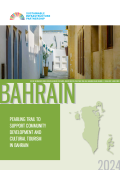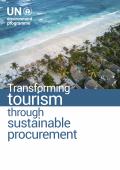Hue is a small but rapidly growing city in central Vietnam where tourism plays a key role in the city’s socioeconomic development, but also has negative impacts on its environment and natural resource base. For example, the goods and services associated with tourism, such as travel, infrastructure development and operation, and the production and consumption of goods, are energy-intensive.
The ‘Sustainable urban tourism through low carbon initiatives’ project, led by the Asian Institute of Technology, Chiang Mai Municipality and the Hue Centre for International Cooperation, explored how the carbon footprint of tourism could be reduced, while maintaining and even enhancing local development benefits. This explores the opportunities and trade-offs encountered by government agencies, residents and tourism-related businesses in the City of Hue as they navigated the choices available. It captures lessons learned from the project for the benefit of other cities facing similar options.
Key messages of the report include that higher-level policy guidance was adapted to suit the city’s local conditions; participatory local process resulted in the idea of promoting ‘garden houses’ has yielded a number of environmental, economic and cultural benefits for Hue; the direction of Hue’s development highlights the importance of a vision for sustainable growth and more importantly, of a champion who will guide the city toward its vision; nonetheless, it also highlights tensions and trade-offs around green tourism: namely, that local initiatives may address emissions in situ, but not the emissions produced by tourists as they travel to the locality.


